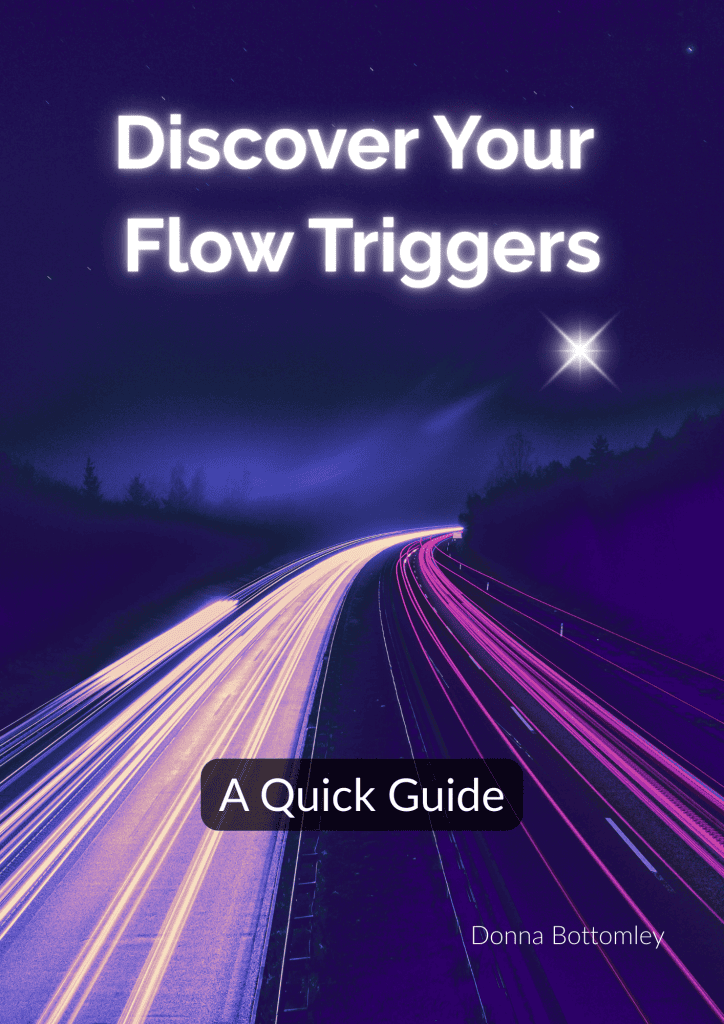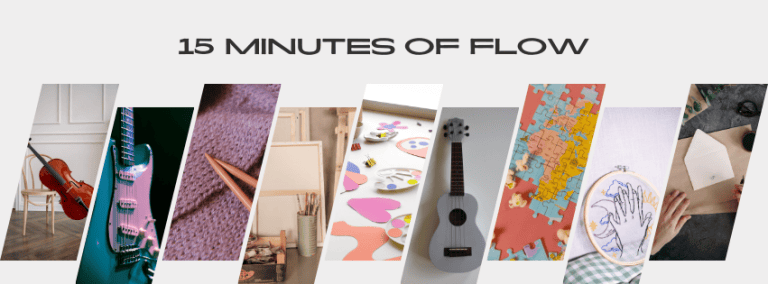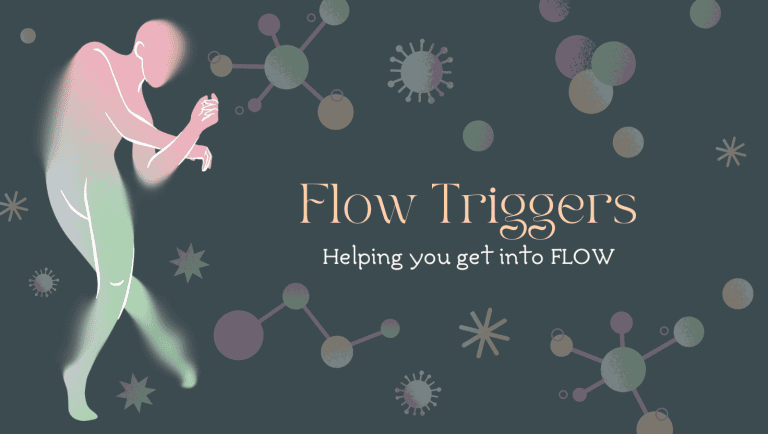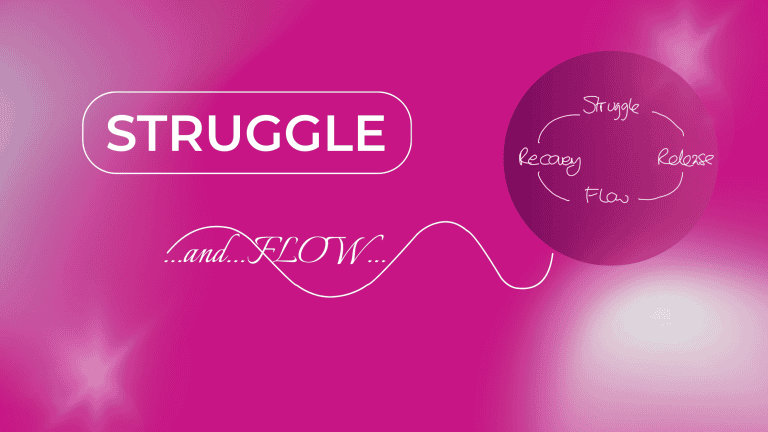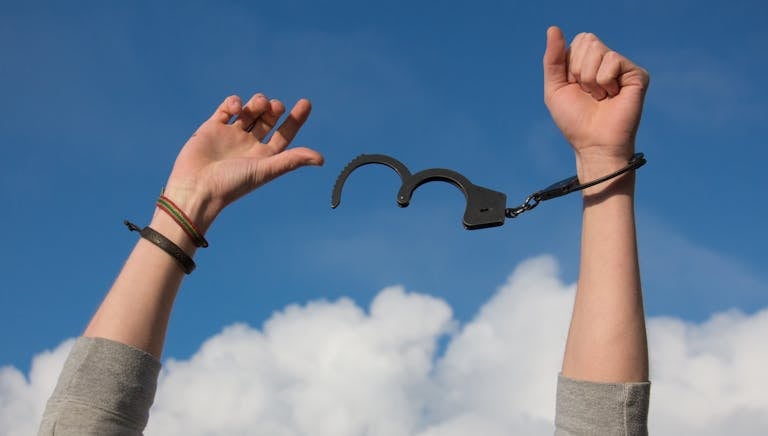What are flow blockers and how do they get in the way of our creative goals?
Happy Sunday!
Last week, we explored the powerful concept of flow triggers. These are the conditions that help to guide us more smoothly into states of complete absorption and heightened creativity.
Today, I want to take a look at the flip side: what gets in the way of achieving that magical state of flow, especially during midlife when demands on our time and attention are often at their peak.
What Are Flow Blockers?
Flow blockers are the thoughts, behaviours and environmental conditions that prevent us from practising and maintaining our creative activities. However, just as we can learn to notice and activate our flow triggers, so we can also learn to pick out and pick off the things that block us.
Steven Kotler’s research into this area has indicated that our blockers tend to fall into several categories:
Internal Blockers
Self-criticism (the inner critic that tries to edit before you create)
Perfectionism (waiting for perfect conditions or expecting flawless output)
Fear of failure (allowing concern about outcomes to prevent starting)
Analysis paralysis (overthinking to the point of paralysis)
Environmental Blockers
Digital distractions (notifications, emails, social media)
Noise and interruptions (physical disruptions to concentration)
Cluttered spaces (visual chaos that fractures attention)
Task switching (rapidly changing between different activities)
Physiological and Behavioural Blockers
Exhaustion (trying to create when physically depleted)
Poor stress management (high cortisol levels inhibit creative thinking)
Dehydration and hunger (basic needs affecting cognitive function)
Sedentary patterns (lack of movement reducing cognitive flexibility)
Midlife-Specific Blockers
Time scarcity (the perception that creative pursuits are luxuries you can’t afford)
Identity constriction (limiting beliefs about who you “should” be at this stage)
Responsibility overload (caring for others and putting yourself to one side)
Comparison with younger creatives (unfairly measuring yourself against those with different life circumstances)
The most insidious aspect of flow blockers is how they compound. For example, switching tasks, feeling elevated stress levels about lack of time, which then leads to lowered motivation and ‘what’s the point’ thoughts. These create a perfect set of flow blockers.
As Kotler notes in “The Rise of Superman,” these blockers aren’t just inconveniences, they actually can alter your neurochemistry. However, we can learn to identify and dismantle them.
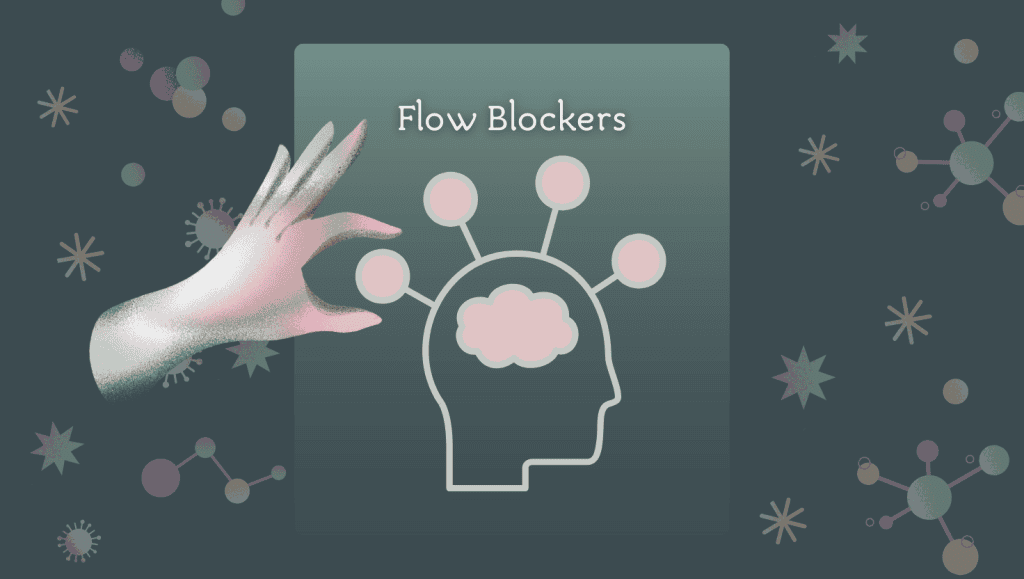
Overcoming Your Flow Blockers
The first step to overcoming flow blockers is awareness. During today’s Fifteen Minutes of Flow LIVE session, we will have a look at identifying what may be blocking your creative flow and consider strategies for reducing them.
These are some of the ways that the research suggests we consider when aiming to overcome our flow blockers:
Trigger-blocker mapping: Identifying which specific flow triggers counteract your personal blockers. For example, if self-criticism is your blocker, the “challenge-skills balance” trigger (working at the edge of your abilities) can help silence the inner critic.
Environment redesign: Creating physical spaces that minimise distractions and signal to your brain that “this is where flow happens.” Even dedicating a specific chair or corner of a room can establish powerful environmental cues.
Micro-flow practices: Utilising short, concentrated periods of creative practice; like our fifteen-minute sessions, to bypass the “I don’t have time” blocker that’s so common.
Attention training: Strengthening your capacity to stay focused through simple mindfulness exercises that can be integrated into daily routines.
The Wonderful Opportunity of Midlife Creativity
One of the main messages I would like to offer up, is that midlife creativity can be an incredible opportunity to do something wonderful when it comes to your creative practice.
Kotler speaks about the years of pattern recognition that we have built up, and how this means that we do have the potential to see things that those without years of experience do not see. Pattern recognition is a key skill in creativity, as is the years of motor learning, and emotion regulation skills that come from maturity.
Add to this a reduced need to ‘fit in’ and we do have the capacity to create new, novel, amazing things in our creative work. Especially if we can harness what may block this.

Join Me Today for Fifteen Minutes of Flow LIVE
I’m excited to invite you to today’s Fifteen Minutes of Flow LIVE session at 7:30pm (UK time), where we’ll briefly look at personal flow blockers together.
How Our Session Will Unfold:
Introduction & Flow Blocker Identification (5 minutes)
We’ll begin with a brief discussion of common flow blockers and complete a quick check to identify which ones are most relevant for you.
Setup Time (2 minutes)
A brief moment to arrange your creative space and materials.
Practice & Blocker Neutralisation (5 minutes)
During this 5-minute countdown period, we can aim to reduce any clear blockers. We will then do some initial practice, to get into our creative activity. This practice is important in training our brains to transition into creative states more easily over time.
Choose specific actions based on your primary blocker:
For inner critic/self-judgement: Write down a specific negative thought you have about your creative work, then immediately write a compassionate counter-statement to balance it out.
For perfectionism: Set a very small, even seemingly ridiculous goals for the session (e.g., “I will write two sentences” or “I will make three brush strokes”).
For distractions: Do a quick scan of your environment and remove or silence anything that might pull your attention away. Close unnecessary tabs, put your phone in another room, and communicate to anyone nearby that you need this uninterrupted time.
For physical tension: Do 30 seconds of gentle stretching, followed by 10 deep breaths, focusing on releasing tension in your shoulders, jaw, and hands.
For transition difficulties: Write a clear “permission slip” to yourself. Literally a note that says, “For the next 15 minutes, I give myself complete permission to create without judgement or expectation.”
For all blockers: Complete this sentence in writing: “The smallest step I can take right now to begin my creative practice is _______.”
Each time you practise these techniques, you’re not just preparing for today’s session, you’re developing a reliable pre-flow ritual that your brain will eventually recognise as the doorway to your creative state.
Focused Creative Time (10 minutes)
The core practice time where we will engage with our chosen creative activity.
Reflection & Sharing (5 minutes)
An opportunity to discuss what worked and what didn’t in overcoming blockers.
Optional Journaling (7 minutes)
Free-writing to offload and process the session, or anything else from the week that has just gone. You could journal about moments when you felt blocked and how you moved through them.
Why Fifteen Minutes of Flow?
Even brief creative sessions can activate flow triggers and reconnect us with our artistic selves. Fifteen focused minutes can:
Help us focus and over-ride blocks
Establish sustainable and regular habits
Provide a pre-Monday mood boost if you do it on a Sunday
Help us quickly tune back into the joy that creative expression brings
My Own Flow Blockers
I wanted to share a bit about my own struggle with flow blockers, particularly in relation to my guitar practice.
I got the guitar out last November (2024) as I really wanted to get back into playing it for a songwriting mentorship program that I was on. There were some quick, fleeting thoughts about “I’m not going to be able to play as well as the other guitarists in the group”, “I’ve been away from it too long”, “I won’t be as good as they will expect me to be”, “I might embarrass myself”.
These fleeting thoughts, quietly made me procrastinate. 8 weeks past and I hadn’t picked up the guitar. I thought “it’s too late now, I’ve missed my window of practice”. I found that I lost the motivation and also lost the sense of a goal. The blockers can be so subtle, like this. ust forgetting, or putting off. Doing something else, and then finding that time has passed and you haven’t done what you wanted to do, and then you get other thoughts, like “What’s the point now” etc.
I have set myself a clear and achievable goal now. To just get back to holding and spending a regular section of time with the guitar. Because holding it and doing something small, like playing 2-3 chords and transitioning cleanly between them, makes me feel good. That’s what I want to do. This activates the psychological flow trigger of clear goals while dismantling the perfectionism blocker.
We may not be able to eliminate our blockers, but we can learn to recognise them and work with them.
Ready to Experience Flow Today?
Here’s How to Join:
Join Our Facebook Group – For ongoing connection, support, and flow-focused community, join our dedicated Facebook Group FIFTEEN MINUTES OF FLOW. All session links will be posted there, along with additional resources and discussions.
Subscribe to My YouTube Channel – The live session will be streamed on my YouTube channel. Subscribe to THE WEEKLY FLOW PROCESS and click the notification bell to be alerted when we go live.
Mark Your Calendar – Today’s session begins at 7.30pm (UK time). All you’ll need is:
Your chosen creative materials (whatever speaks to you today)
A quiet space where you can focus for 30 minutes
A willingness to experiment with your creative process
How to Prepare for Maximum Flow
To make the most of our session today:
Reflect on your blockers in advance – Take a few moments to consider: what typically prevents you from entering flow? Is it internal criticism, external distractions, physical discomfort, or something else?
Create a distraction-free zone – Silence notifications, close unnecessary browser tabs, and let others in your household know you’ll need 30 minutes of uninterrupted time.
Have a “blocker emergency plan” – Decide in advance what you’ll do if your main blocker arises during our session. For example, if self-criticism appears, perhaps you’ll jot it down quickly and return to your work.
Set a very small goal – The smaller and more achievable your creative goal, the more effectively you’ll bypass perfectionism and other common blockers.
Arrive 5 minutes early – This gives you time to settle in, check your technology, and transition mentally from your day into a creative mindset.
Coming Next Week: Building Your Flow Community
Next week, we’ll explore how community can be one of the most powerful tools for sustaining creative flow. I’ll share insights from research about collective flow states and how finding or building the right creative community can amplify your individual practice. We’ll discuss practical strategies for finding your creative tribe, even in midlife when social circles often narrow rather than expand.
See you today!
Donna x
If you would like to be guided through finding your flow triggers and blockers, download my Flow Triggers ebook below:
